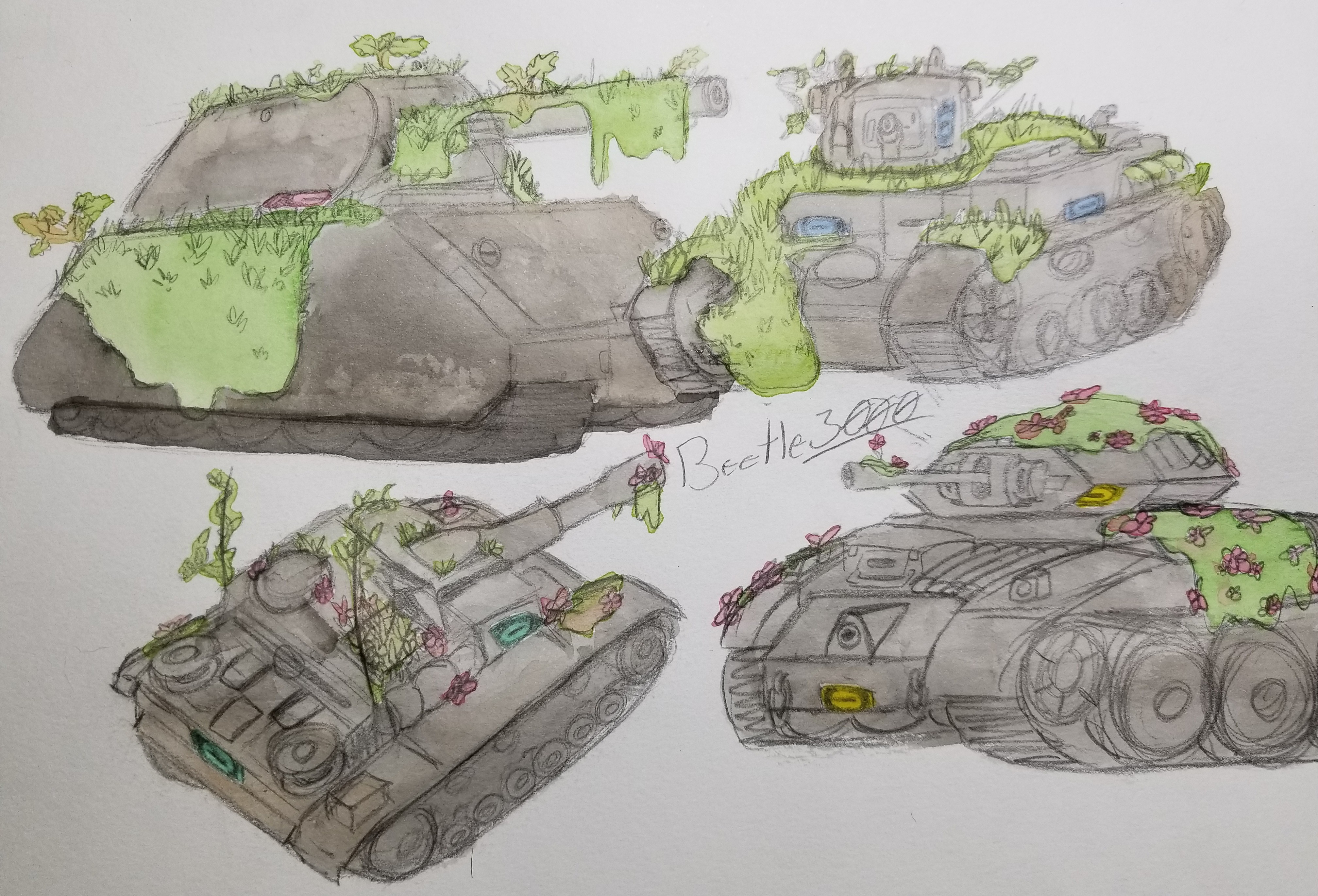Why They Exist
The main motivators for MAI to go feral were A) overwhelming stress during the war, B) neglect, and C) uncertainty for the future after the war.
The first one was the most common; Some MAI couldn't bear the emotional/physical toll war had taken on them, and as a result, made the decision to escape even if it meant punishment by their superiors if they were found. These units are extremely wary of humans, and sometimes even other MAI, and an uncommon few are particularly prone to shutting down from over-stimulation.
MAI that went feral due to neglect aren't as common as the former, but still make up a sizeable portion of the feral population. The most common form of this is the unit being mostly ignored by their crew outside of mandatory interaction, and due to the requirement of interaction at younger stages, this made for quite emotionally unstable units. These types of feral MAI are labeled as the most wary towards humans, but the difference between this fear and that of MAI that fled from stress is that if not left alone, rather than moving away, they may attempt to harm the aggravator.
The least common type of feral MAI are the type that didn't go AWOL in any way, but fled after the war. The main motivator for this was the units being so suddenly exposed to a rapidly changing world that they had no control in. What would their future be like? No one ever planned far enough ahead to know what to do with MAI after the war ended, because it wasn't anticipated that they'd even be used. Would they be accepted? forced into another type of work? turned to scrap? Some MAI simply didn't want to wait around to find the answer, and left society.
After The War
After the war ended, unaccounted for MAI were just labeled as missing in action, and considered dead. That is, until some time later in 2008, a man out hiking alone spotted a somewhat disheveled sherman tank AI wandering the forests of eastern Europe. They fled before he got the chance to grab a photo of them, but they lingered just long enough for him to be able to read the ID number on their hull. When he later looked up the ID, it came up that the unit had went missing during the war, but when he relayed this to his friends, nobody believed him that it could've been an MIA unit, and that he'd most likely just read the ID wrong and the tank was out on a walk just like he was. This was the general consensus until other claims of unfamiliar units started coming to light, motivating people to go out and start looking for these supposed 'feral' units, as the general public had nicknamed them. Most groups were unsuccessful until early 2010, when a small group of five spotted two MAI with dead ID numbers. These units were actually approachable and hesitantly conversed with the group, explaining that they had both fled to the forests during the war, and sought it best to not communicate with the outside world for their own safety, and they even asked the human group if the war had ended yet. This was a quite shocking discovery that went international in a matter of days, and brought up the question of whether feral MAI should be punished what what they'd done. Eventually, though, it was decided that they would be forgiven for leaving due to the circumstances in which they were brought into the war; if they had no choice than to fight from birth, their leaving was much more justified than if an individual had enlisted.
What Are They Doing Now?
Currently, there are still thousands of MAI that went feral and went into the wilderness, and although some eventually found their way back into society, the bulk of them had remained there for too long to ever feel comfortable with permanently leaving. They commonly form close-knit family groups and travel together as such, and travel on well worn trails made by their own kind in the past as to be minimally invasive to the environment around them. It's common in more rural places to see lightly traveled trails through open spaces like unplowed fields and even yards at night, and worn down track ruts into ponds, rivers and lakes where they refuel. Some found it fit to eventually reconnect to the internet, and some will even slip though small towns in the later hours of the day to visit at times with low traffic, but most have chosen to stay with their previous lifestyle.

Comments